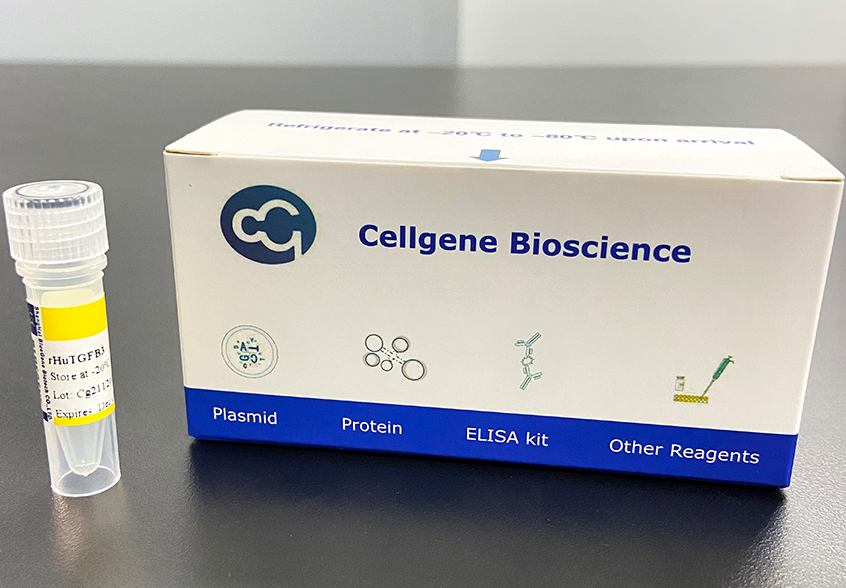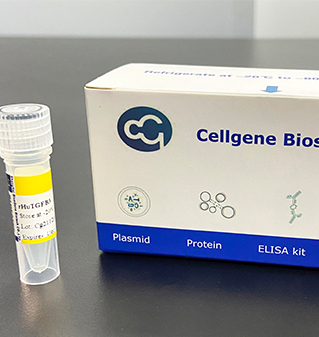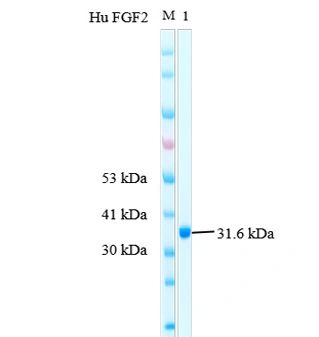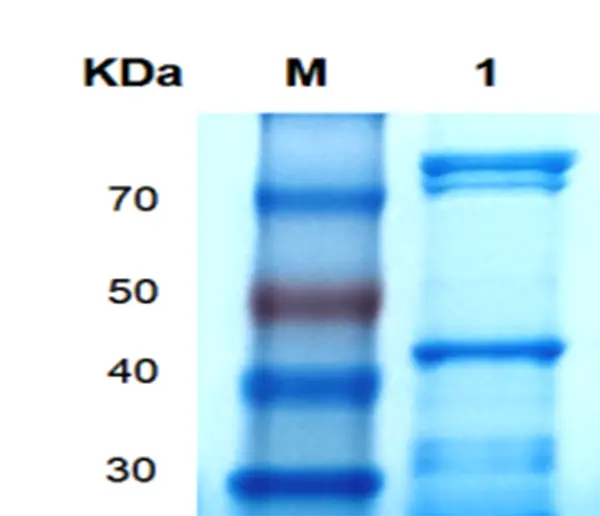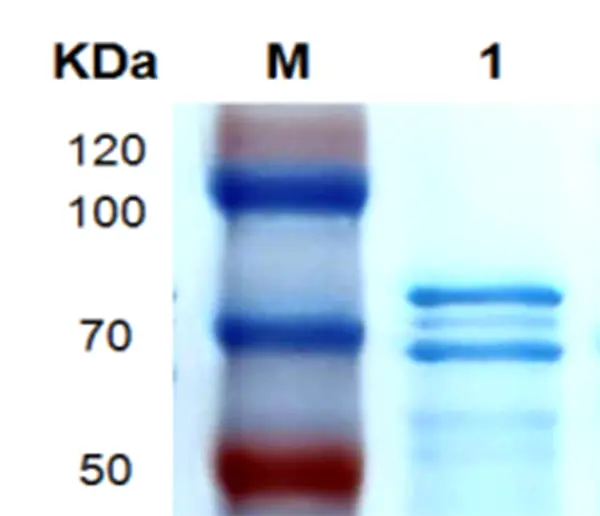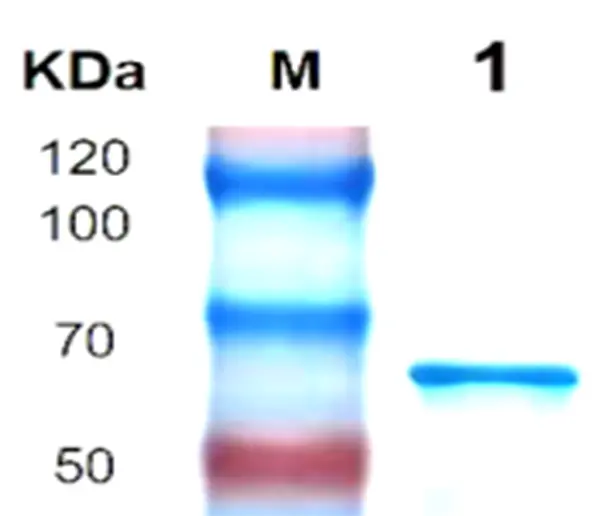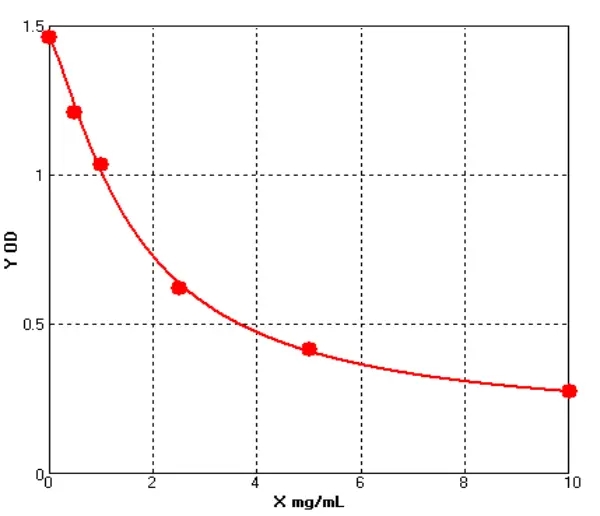Fibroblast Growth Factor 2 (FGF2) can also be called BFGF, FGFB, FGF-2, HBGF-2.
Specifications Of P01F0002 Human FGF2 Protein, Recombinant
Porduct's Information | |
CatalogNumber | P01F0002 |
Package Size | 10ug/50ug/100ug/1mg |
Other Names | BFGF; FGFB; FGF-2; HBGF-2 |
Protein & NCBI Number | D9ZGF5, NM_001361665.2 |
Host | E.coli |
Express Region | 1-155aa |
Protein Length | Total length of the protein(including Tag) |
Protein Sequence | MAAGSITTLPALPEDGGSGAFPPGHFKDPKRLYCKNGGFFLRIH PDGRVDGVREKSDPHIKLQLQAEERGVVSIKGVCANRYLAMKEDGRLLASKCVTDECF FFERLESNNYNTYRSRKYTSWYVALKRTGQYKLGSKTGPGQKAILFLPMSAKS |
Molecular Weight | about 17.3kDa |
Fusion Tag | 6×His-SUMO (N-terminus) |
Purity | ≥95% SDS-PAGE |
PhysicalProperty | liquid or lyophilized powder |
Reconstitution | Storage solution: We recommend using PBS or a suitable solvent according to the experimental requirements to prepare 1mg/mL storage solution, aliquot and store at -20 °C. Working solution: According to the experimental requirement, dilute Storage solution. The working solution can be stored at 4°C for 2-3 weeks after dilution. |
Storage & Stability | The shelf life of liquid form is 6 months stored at -20 °C /-80 °C. The shelf life of lyophilized form is 12 months stored at -20 °C /-80 °C. |
Applications | Antibody preparation, immunoassay (ELISA, WB), subcellular localization and interaction protein identification, etc. |
Lead Time | 5 to 10 business days; 2 to 3 days for stock products |
Background |
FGF-2, also known as basic fibroblast growth factor (bFGF), is an important member of fibroblast growth factor (FGF) family. FGF-2 is a cationic polypeptide with a molecular weight of 16 ~ 18000 and an isoelectric point of 9.6. FGF2 can be produced by vascular endothelial cells, retinal pigment epithelial cells, photoreceptor cells, m ü ller cells and astrocytes. It widely exists in a variety of tissues in vivo and mainly plays a role through autocrine and paracrine. The signal pathway induced by FGF2 is necessary for normal cell growth and differentiation. It exists in almost all cells. FGF2 binds to FGFR, which makes the receptor dimerize and tyrosine kinase is activated, triggering a series of intracellular phosphorylation cascade reactions to regulate cell growth Differentiation and apoptosis. Under normal conditions, FGF-2 binds to heparin and does not produce biological effects. However, in some pathological cases, the integrity of cells is destroyed, which can release the stored form of FGF-2, promote angiogenesis and participate in the process of tissue repair. FGF-2 and FGFR are almost distributed in various tissues of the whole body. FGF-2 is the strongest known cytokine. It plays an important role in promoting angiogenesis, wound healing, tissue injury repair, neuroprotection, embryonic development and tumor formation. FGF-2 has two main functions, inducing endothelial cell germination and proliferation and increasing vascular permeability. In addition, studies have shown that FGF2 is also closely related to depression. |

